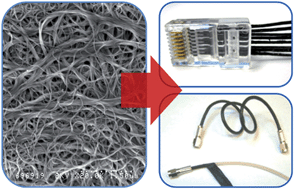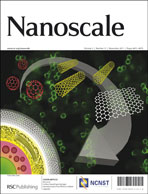Wires and cables are essential to modern society, and opportunities exist to develop new materials with reduced resistance, mass, and/or susceptibility to fatigue. This article describes how carbon nanotubes (CNTs) offer opportunities for integration into wires and cables for both power and data transmission due to their unique physical and electronic properties. Macroscopic CNT wires and ribbons are presently shown as viable replacements for metallic conductors in lab-scale demonstrations of coaxial, USB, and Ethernet cables. In certain applications, such as the outer conductor of a coaxial cable, CNT materials may be positioned to displace metals to achieve substantial benefits (e.g.reduction in cable mass per unit length (mass/length) up to 50% in some cases). Bulk CNT materials possess several unique properties which may offer advantages over metallic conductors, such as flexure tolerance and environmental stability. Specifically, CNT wires were observed to withstand greater than 200,000 bending cycles without increasing resistivity. Additionally, CNT wires exhibit no increase in resistivity after 80 days in a corrosive environment (1 M HCl), and little change in resistivity with temperature (<1% from 170–330 K). This performance is superior to conventional metal wires and truly novel for a wiring material. However, for CNTs to serve as a full replacement for metals, the electrical conductivity of CNT materials must be improved. Recently, the conductivity of a CNT wire prepared through simultaneous densification and doping has exceeded 1.3 × 106 S/m. This level of conductivity brings CNTs closer to copper (5.8 × 107 S/m) and competitive with some metals (e.g.gold) on a mass-normalized basis. Developments in manipulation of CNT materials (e.g. type enrichment, doping, alignment, and densification) have shown progress towards this goal. In parallel with efforts to improve bulk conductivity, integration of CNT materials into cabling architectures will require development in electrical contacting. Several methods for contacting bulk CNT materials to metals are demonstrated, including mechanical crimping and ultrasonic bonding, along with a method for reducing contact resistance by tailoring the CNT-metal interface via electroless plating. Collectively, these results summarize recent progress in CNT wiring technologies and illustrate that nanoscale conductors may become a disruptive technology in cabling designs.


 Please wait while we load your content...
Please wait while we load your content...